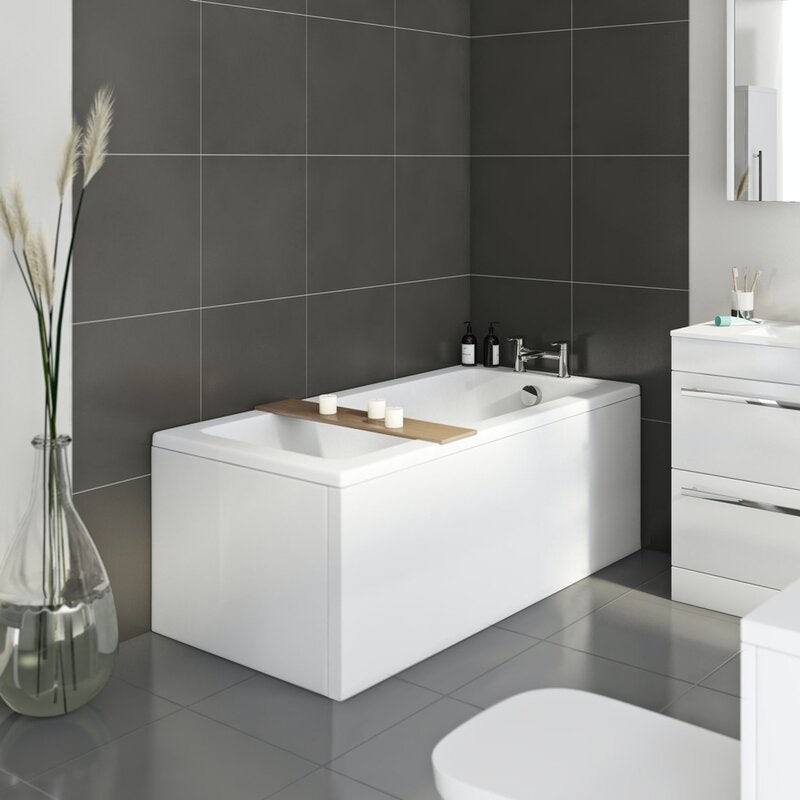{Visit My Website What're your thoughts about Hiring a Plumbing Company? We recommend that you clean your acrylic bathing product made of Delta ProCrylic or Acrylic with Innovex Technology with non-abrasive soaps and cleaners, such as: When it’s time to clean, always use a terry cloth towel, soft cloth or sponge to avoid scratching the acrylic surface. Don’t use abrasive scrubbing pads, steel wool or sponges, cause permanent damage to the acrylic material. If you use a drain cleaner or clog remover, be sure to rinse thoroughly with water so no product is left standing near the drain. Some chemicals and cleaners may deteriorate acrylic surfaces, causing cracks and, potentially, property damage. To avoid this, don’t use cleaning products that state on their label that they are not suitable for use on Acrylic, ABS, Polystyrene or Plastic. Be sure to check the label of any product before you apply it to the surface; it’s easier to avoid damage than to try to remedy it. Chemicals we do not recommend using to clean acrylic showers/tubs: When you’re ready to apply sealant, a little planning goes a long way. Pick up some painter’s tape and use it to mask off the seam to help make cleaning up easier. When you’re applying the bead, use a constant, steady speed to avoid an uneven finish. Use a caulk tool or a plastic spoon to work the sealant into the joint. Wetting the tool with denatured alcohol will help create a smooth finish. Follow the directions on the back of the tube for cure time. Certain chemicals and cleaners may deteriorate acrylic surfaces, causing cracks and, potentially, property damage. After you’re finished applying it, clean up the product surface and remove any excess sealant with denatured alcohol. Don’t use solvents (turpentine, lacquer thinner, mineral spirits, paint thinner, MEK, xylene, acetone, naphtha, etc.) that can wreak havoc on an acrylic surface. With a little care and consideration, you can prevent damage to your acrylic shower or tub. Keep a supply of soft cloths handy and remove any damaging products or abrasive scrubbing items from the bathroom to ensure they aren’t around when it’s time to clean. https://www.deltafaucet.com/design-innovation/inspiredliving/how-to-clean-acrylic-shower I ran across that entry about Finding the Right Plumbing Expert while doing a search on the internet. Sharing is good. You won't know, you may be helping someone out. I enjoy reading our article about Hiring a Plumbing Expert.
Acrylic bathrooms, shower trays, and also various other acrylic restroom ware have ended up being more common in washrooms in current times. Not as durable as well as stylish as enamel and porcelain baths as well as fixtures, they are much more cost effective and serve quite a lot the very same fundamental purpose. Some usual instances of damages to acrylic shower room components consist of discoloration, fractures, openings, etc.Bathroom Staining
With prolonged use of acrylic bathrooms comes staining or staining. While some stains can be gotten rid of easily, utilizing unique chemicals, others need that the bathroom be resprayed. Aromatherapy oils loosen the dust in some cases consequently restoring the bath to its previous glory.Chemical Reactions
In some cases, individuals try to repaint the whole surface of their acrylic bathroom by themselves either due to the fact that they do not like the color to hide blemishes. When they do not such as the result, they use paint cleaners. You need to never utilize paint remover on acrylic bathrooms. Paint eliminators do not respond with the surface area of steel baths, they destroy acrylic baths irreversibly. This produces a lot more benefit the specialist. The best course of action right here is to call a professional for aid with changing the bath.Scraped shower or bath surface
Acrylic bathroom components are not abrasion-resistant like enamel varieties. Being a really soft product, acrylic scrapes can even be concealed without finishing or dental filling. For these, you ought to seek specialist aid for your bathroom repair work.Broken Acrylic Baths
The life-span of acrylic and also fiberglass baths is up to 15-20 years for shower frying pans and also baths, typically. Splits in an acrylic shower tray are probably among the simplest problems to repair for a repair service professional. This is the same for PVC, material, and also various other such materials.
Acrylic bathrooms, shower trays, and also other acrylic shower room ware have actually become a lot more usual in washrooms in recent times. With long term usage of acrylic baths comes staining or staining. You should never ever make use of paint cleaner on acrylic baths. Paint eliminators do not react with the surface of steel baths, they ruin acrylic bathrooms irreversibly. The life-span of acrylic and fiberglass baths is up to 15-20 years for shower frying pans and baths, typically.How to clean Acrylic shower
USE THESE NON-ABRASIVE CLEANERS
DO NOT USE THESE CLEANERS
Sealant Application Tips

Call
5 Solutions to Acrylic Washroom Issues
Click Here